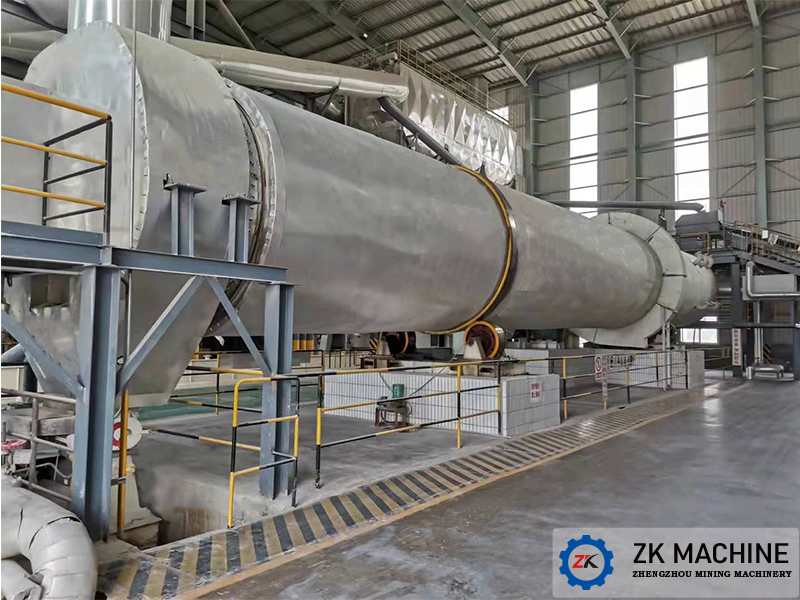Low-temperature slow-speed calcination means that the material stays in the calcining equipment for a long time, and the feeding and discharging time is at least tens of minutes. The surface temperature of gypsum particles is in a low state, and the internal and external temperatures of the particles are relatively close. For example, frying pans, indirect rotary kilns, and indirect boiling furnaces are all low-temperature and slow-speed calcination equipment. These calcination methods (equipment) are to indirectly heat the desulfurized gypsum through a built-in heating tube, and the heat source generally adopts steam, heat transfer oil or hot flue gas. Because of the indirect heating, the heat transfer speed between the material and the heat source is slow. After the gypsum is slowly heated and heated, it is slowly dehydrated to form hemihydrate gypsum. The most prominent advantage of low-temperature slow calcination is that the product quality is uniform and stable. Due to low-temperature calcination, most of the calcined products are hemihydrate gypsum HH (about 88%), and a very small amount of anhydrite AIII (about 2%) and dihydrate gypsum DH (less than 1%), the crystal water content is 5.5% to 6.0%, so the building gypsum powder produced by low temperature and slow calcination is stable in quality, stable in phase composition, slow in coagulation, and small in water demand for standard consistency.

2. High temperature rapid calcination
During high-temperature rapid calcination, the temperature of the heat source is usually greater than 600 °C, the material stays in the calcining device for only a few seconds, the surface temperature of the gypsum particles is high, and the internal temperature of the particles varies according to the size of the agglomerated particles. Rotary kiln calcination etc. all adopt high temperature rapid calcination process. The high-temperature rapid calcination method (equipment) is that the desulfurized gypsum is in direct contact with the high-temperature flue gas for heat exchange and rapid dehydration and calcination. Due to the rapid heating of fine gypsum powder, it is easy to generate anhydrite AIII and anhydrite AII; medium-fine gypsum powder mainly generates hemihydrate gypsum HH; the agglomerated coarse gypsum powder appears to be calcined on the surface, but the internal temperature is not reached. The calcination temperature still maintains the dihydrate phase. Its phase components are generally about 70% of hemihydrate gypsum HH, about 10% of anhydrite AIII, and about 3% of dihydrate gypsum, showing that the proportion of anhydrite AIII is relatively large, and even a certain amount of anhydrite AII will be produced. , reducing the active ingredients of gypsum. Therefore, it is difficult to control the rapid calcination process, the quality of building gypsum fluctuates greatly, the product phase composition is unstable, the coagulation speed is too fast, and the water required for standard consistency is high, but the production efficiency is high. Since anhydrite AIII is an unstable phase, it is easy to absorb moisture in the air to form a semi-aqueous phase, so an aging cooling device is required in the system. The most prominent advantages of high temperature rapid calcination are low equipment investment and high production efficiency.
3. Composite calcination
Composite calcination is a new process developed in the calcination process of desulfurized gypsum in recent years, especially in the gypsum board industry. Composite calcination is mainly to simulate slow calcination, and the process and time of gypsum calcination are appropriately lengthened to avoid concentrated heating, that is, the method of "one-step calcination" is changed to "two-step calcination". Desulfurized gypsum is heated in sequence in two different calcining equipments, first all free water and part of crystal water are removed, and then the remaining part of crystal water is removed to generate qualified building gypsum, which can reduce material temperature and realize cascade utilization of energy. In order to achieve the same effect as low temperature calcination. The current common practice is the combination of airflow rapid drying and calcination and indirect heating boiling furnace, or airflow rapid drying and wok calcination.

